What Is The Most Important Sense For An Animal
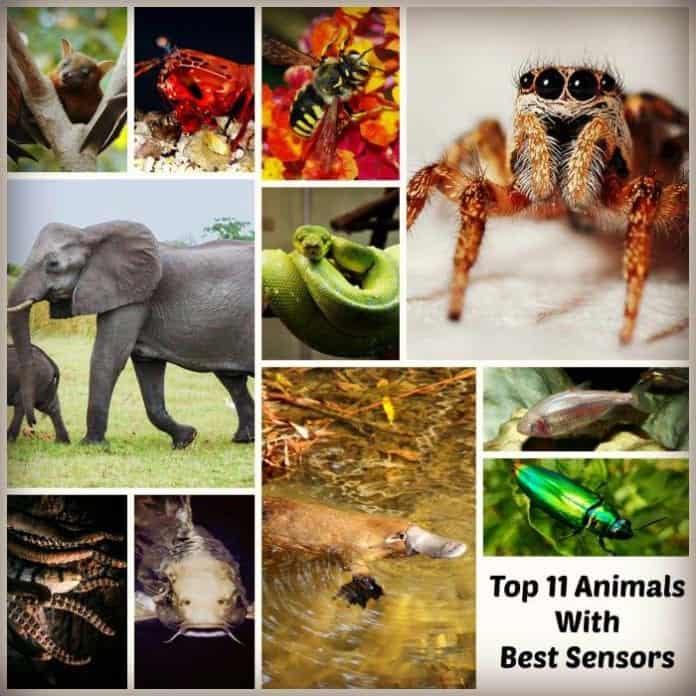
In general, plants, animals, and other organisms obtain information about the world through their senses.
This is because their survival is highly dependent on their ability to perceive and sense any stimulus or changes in the environment.
However, as humans, our senses are limited to what we can meet, aroma, hear, gustation, and experience, and by the capacity of data they provide. While these senses work entirely well for us, some animals take a completely different perception. While they as well possess some senses that humans have, they tend to have this at the far college intensity and sensitivity.
Often being preyed upon, some animals have developed their sense organs to sense any impairment and survive it. Other animals developed their senses as bounty for their weak or lack of some senses. Others accept adult them to improve their hunting process.
The following are the 11 animals with the best sensors in the animal kingdom, and the corresponding anatomical and morphological structures that allow them to have so.
Tabular array of Contents
- Peak 11 Animals With Excellent Sensors
- i. Platypus (Electroreception)
- 2. Bats (Echolocation)
- 3. Snakes (Infrared Radiation Detection)
- 4. Octopus (Polarized Vision)
- 5. Catfish (Sense of Taste)
- 6. African Bush Elephant (Sense of Smell)
- vii. Jewel Beetles (Notice Presence of Fire)
- 8. Cavefish (Sense of Hearing)
- nine. Bees (Sense of Earth's Magnetic Field)
- 10. Spiders (Sensitive To Touch on)
- 11. Mantis Shrimp (Circuitous Visual Organisation)
- References
Meridian xi Animals With Excellent Sensors
ane. Platypus (Electroreception)
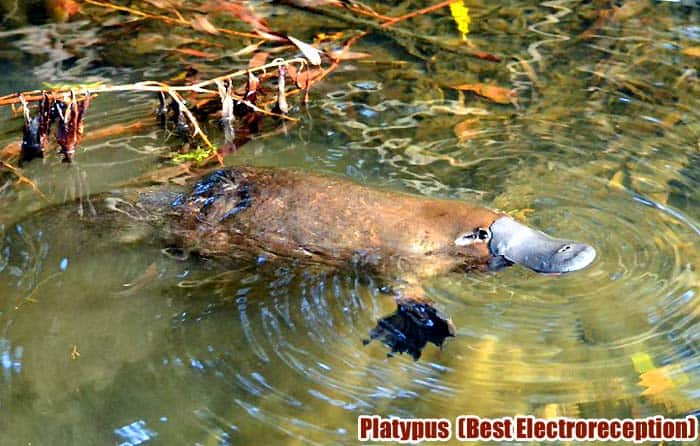
In the entire animal kingdom, the duck-billed platypus, along with echidnas (emmet-eaters), is the just mammal that tin can lay eggs. In add-on to this unique ability, this animal has a highly developed sensor that can locate its prey (i.e., small-scale invertebrates) through electroreception. Using their neb filled with sensors, the platypus can accurately detect the electric impulses of their casualty even in the deepest of waters.
![]()
2. Bats (Echolocation)
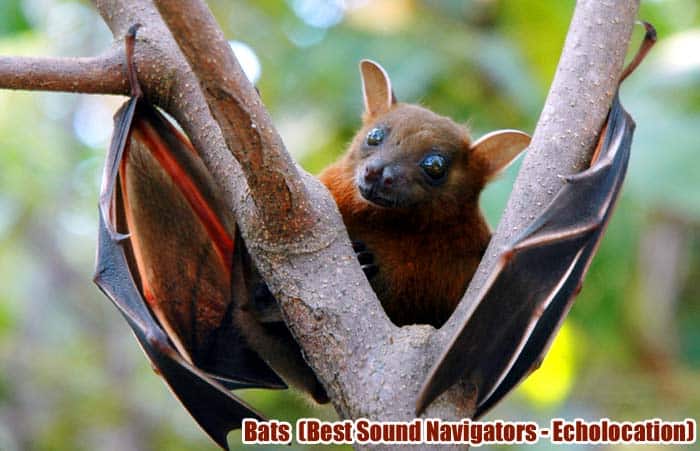
Known to exist creatures of the nighttime, bats are corking sound navigators: an ability called echolocation. Bats use their mouths to produce sounds that will bounce off objects. Since they typically are agile during the night, they use echolocation to search for food, locate whatsoever changes in their flight, and find their way in the night.
![]()
3. Snakes (Infrared Radiation Detection)
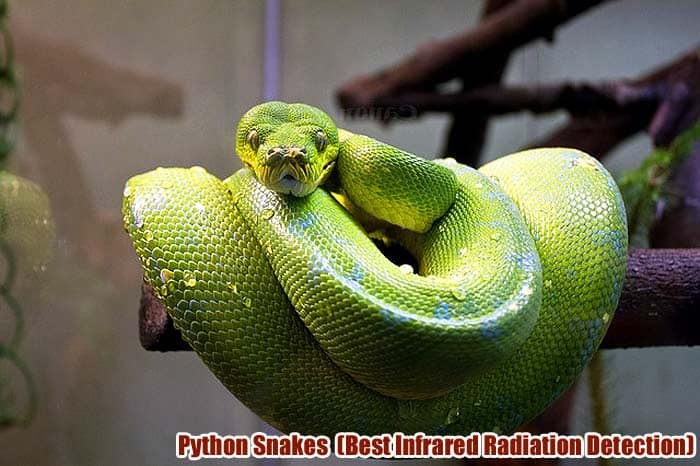
Aside from the distinct five senses, did yous know that snakes have this so-called sixth sense? According to the international science journal Nature, hunter snakes like vipers, pythons, and boas tin can still accurately detect their way through the night. This is considering snakes can detect the infrared (thermal) radiation that is emitted by the bodies of the animals they prey in. Hence, even blinded snakes can still accurately prey on other animals, thanks to infrared radiation!.
![]()
4. Octopus (Polarized Vision)
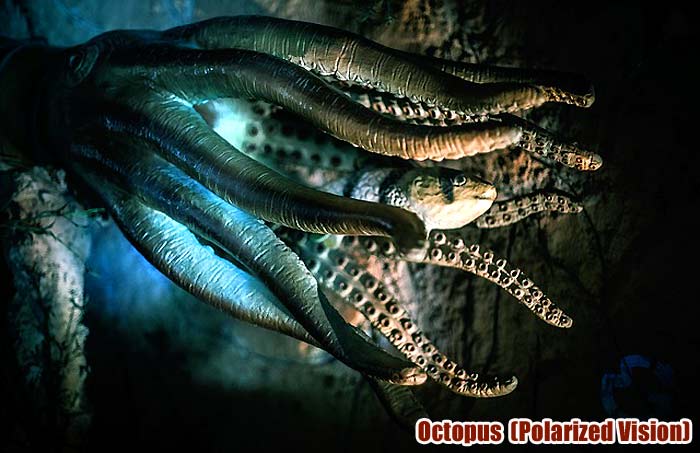
Aside from its flexible physique with 8 powerful tentacles, the octopus is one of the unique animals considering of its incredible sense of sight. For case, they take this then-called "polarized vision" wherein it can control the amount of light coming in, hence, giving it an improved ability to see well in the dark water and attack its prey even at greater depth.
![]()
5. Catfish (Sense of Taste)
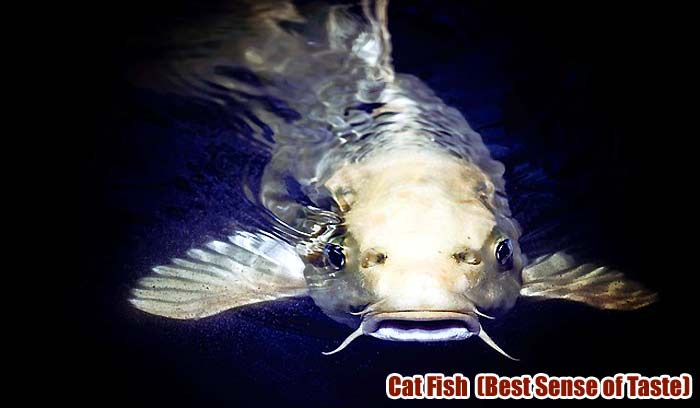
Ever wondered what animate being has the highest sense of taste? Well, the accolade goes to the catfish! Manifestly, this fish with cat-like whiskers has up to more 175,000 gustation sensitive cells (equally compared to an average person with only 10,000 taste buds) located in its entire body. Moreover, along with its four pairs of whiskers, these taste cells helps the fish not only to taste its food but also to locate whatever prey nearby.
![]()
6. African Bush Elephant (Sense of Smell)
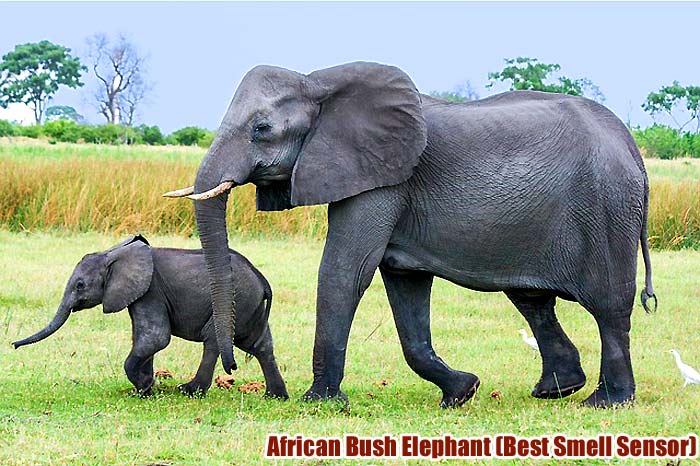
The African bush-league elephant has the best olfactory organ in the whole beast kingdom. Cheers to 2000 powerful sensors in its body/sniffer compared to meager around 1000 sensors found in dogs while humans but 400 olfactory property receptors. According to biological studies, African bush-league elephants got their double the amount of smell-sensing genes from their ancestors during species division.
To exist exact, interestingly elephants elevation the charts based on the number of smell genes with 1948 while cow and dog take the second and third spots with 1186 and 811 genes respectively!
![]()
seven. Jewel Beetles (Find Presence of Fire)
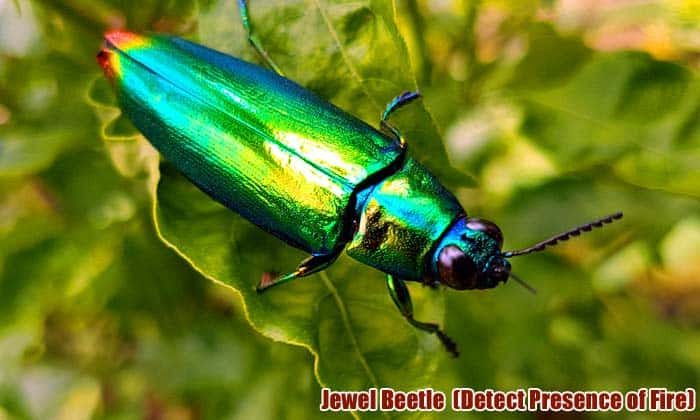
While it is a widespread sense that everyone tin feel the presence of burn down, this tiny brute can smell and detect a burning pine tree that is 10 miles away (equally compared to an average human who tin can but detect at hundreds of feet)! There are 3 apparent reasons why the jewel beetles evolved to develop this graphic symbol-first is mainly for food gathering, secondly is for ensuring the mating process, and 3rd is securing the health of their eggs laid in pine copse.
![]()
viii. Cavefish (Sense of Hearing)
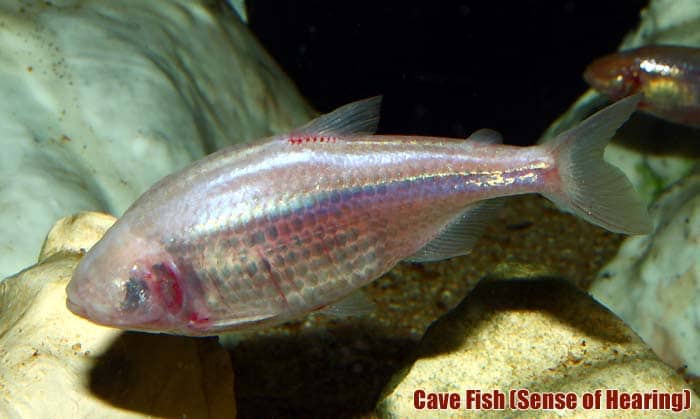
This animal proves the saying "when ane sense is weak, the other senses are farther strengthened. " to be true. Cavefish lives in a relatively pitch blackness environment that's why its sense of sight is about functionless. However, its sense of hearing is substantially sensitive equally it can detect even the slightest racket at 1 kHz (or even lower!). This power helps the cavefish to efficiently locate its prey and filter out unnecessary racket in the surroundings.
Suggested Reading:
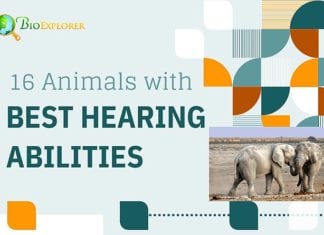
Top 16 Animals with the Best Hearing
The power to hear has been evolving in animals for a considerable time. Explore 16 animals with the all-time hearing (Vertibrates & Invertibrates).
![]()
9. Bees (Sense of Earth's Magnetic Field)
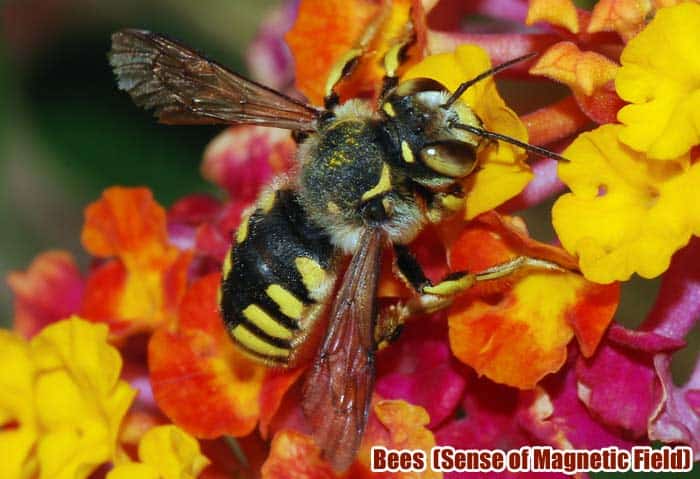
Aside from being able to produce honey through the pollination of flowers, did yous know that bees are incredibly hypersensitive that they can too sense the Earth'due south magnetic field? Aside from that, they can also detect atmospheric electromagnetic waves that point thunderstorms. These abilities help bees in navigating flowers and determining whether a tempest is budgeted.
![]()
10. Spiders (Sensitive To Touch)
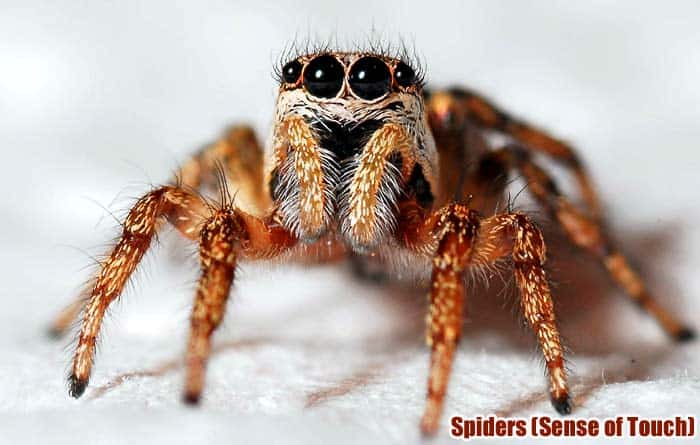
Spiders are one of the very few animals with a hyper-sensitivity to touch. By having massive numbers of hairs (known as trichobothria) on their legs, they are capable of detecting and tracing the origin of a vibration created past an object or another animal. As a upshot, hunting their casualty becomes as piece of cake as just continuing on their cocky-made web.
![]()
11. Mantis Shrimp (Complex Visual Organisation)
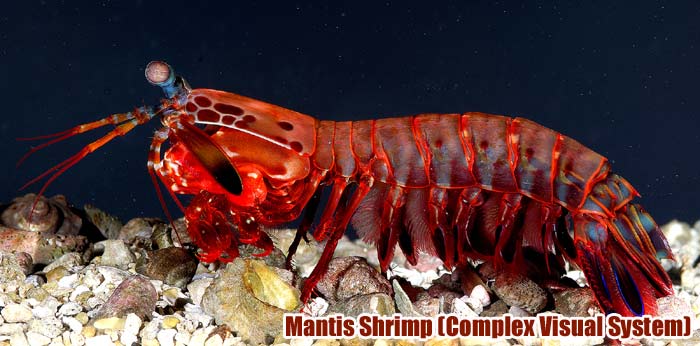
Are yous already fascinated by the octopus' sense of sight? Wait until you lot hear nigh the phenomenal ability of the mantis shrimp. Known to have the most circuitous visual organisation in the animal kingdom, mantis shrimps accept 16 types of photoreceptors (low-cal detectors) that tin can detect visible and ultraviolet (UV) light and are the only known animals to run into the circularly polarized light! Aside from that, they tin sense light depth on i middle while independently moving the other.
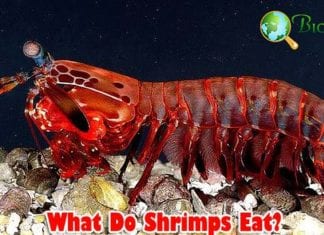
What Do Shrimp Eat?
Shrimps are crustaceans with long slender bodies. Their muscular abdomens come in handy during locomotion. Explore what practice shrimps swallow & what eats shrimps.
The animals mentioned above just proves that what humans can perceive is very limited by a very narrow ring of what is possible. Humans might have highly developed intellectual ability but these creatures with such "super sensors" are not less either.
Every bit a result, scientists and inventors continually seek to discover and construct a variety of devices and gadgets that can assist increase the range of what nosotros tin sense.
Considering of them, we can already discover beyond the limitation of human senses and have a glimpse of things that were previously sectional to animals. Wouldn't that be exciting?
![]()
Cite This Page
References
- "Platypus Electroreception". Accessed November 23, 2017. Link.
- "How do bats echolocate and how are they adapted to this activity? – Scientific American". Accessed November 23, 2017. Link.
- "Snake infrared detection unravelled : Nature News". Accessed Nov 23, 2017. Link.
- "Octopus Senses – Octopus Facts and Information". Accessed November 23, 2017. Link.
- "What Animal Has the Best Sense of Taste?". Accessed November 23, 2017. Link.
- "Studing Elephants – EDITED By KADZO KANGWANA AWF TECHNICAL HANDBOOK SERIES". Accessed November 23, 2017. PDF.
- "seven Superpowered Brute Senses Yous Won't Believe Are Possible". Accessed Nov 23, 2017. Link.
- "Sensory Adaptation for a Cavefish | Animals – mom.me". Accessed November 23, 2017. Link.
- "The 6 Nearly Mind-Bravado Superpowers of Bees". Accessed November 23, 2017. Link.
- "The spider sensory organs and legs". Accessed November 23, 2017. Link.
- "Mantis shrimp have the world's best eyes but why?". Accessed November 23, 2017. Link.
Source: https://www.bioexplorer.net/animals-with-best-sensors.html/
Posted by: hildebrandjould1992.blogspot.com

0 Response to "What Is The Most Important Sense For An Animal"
Post a Comment